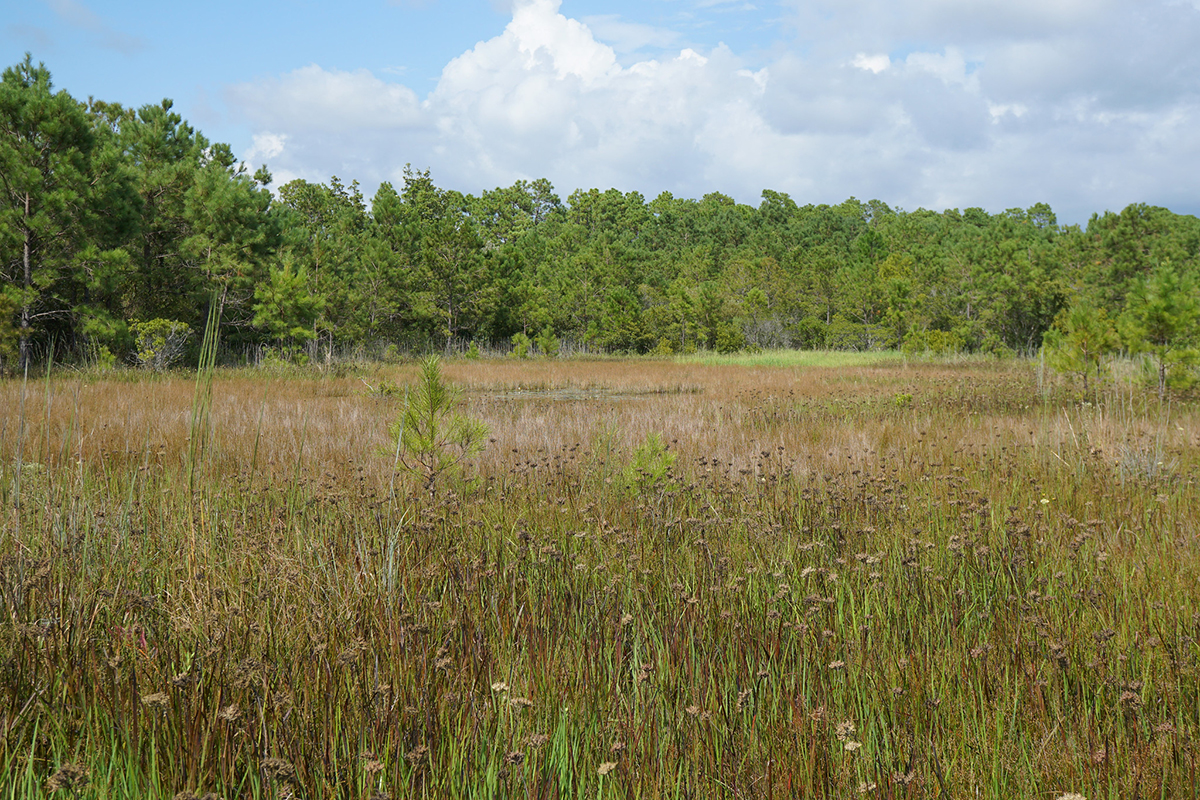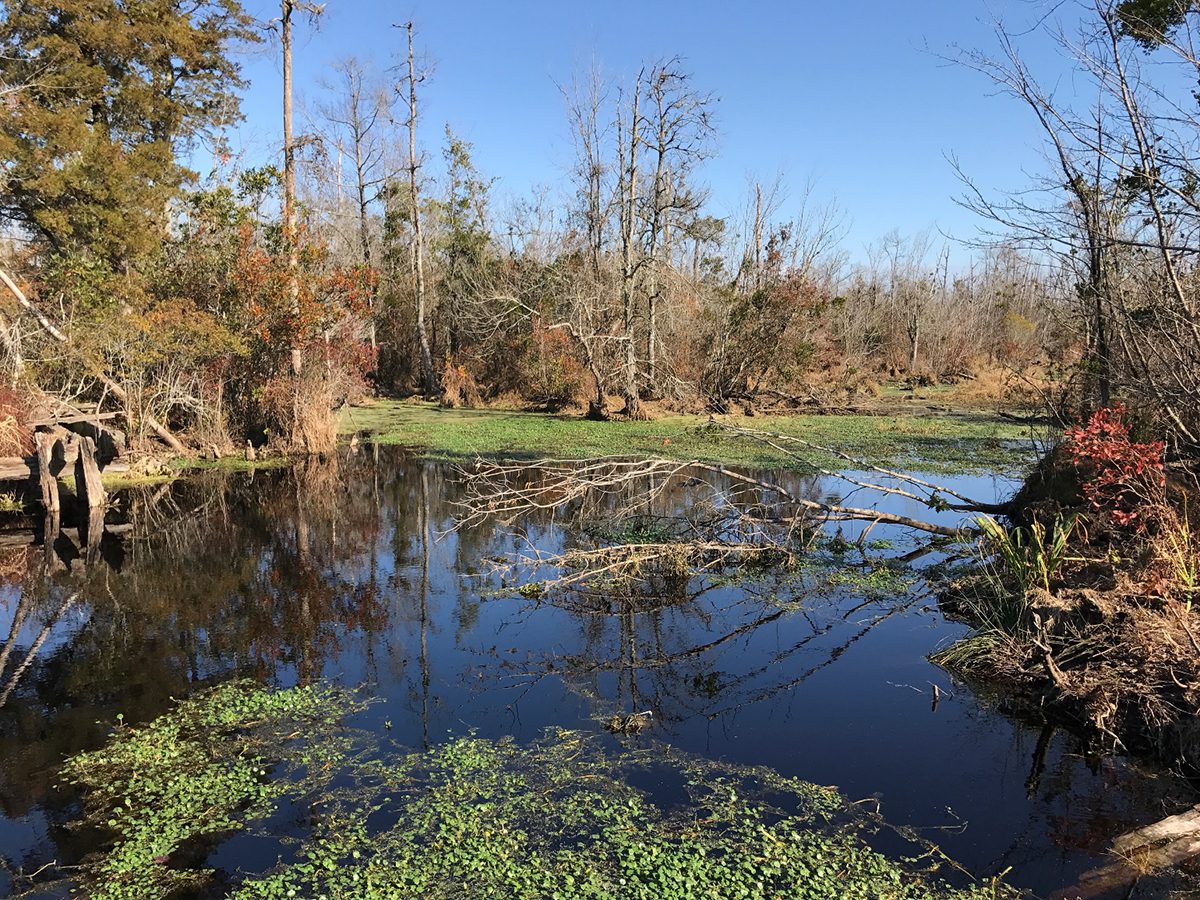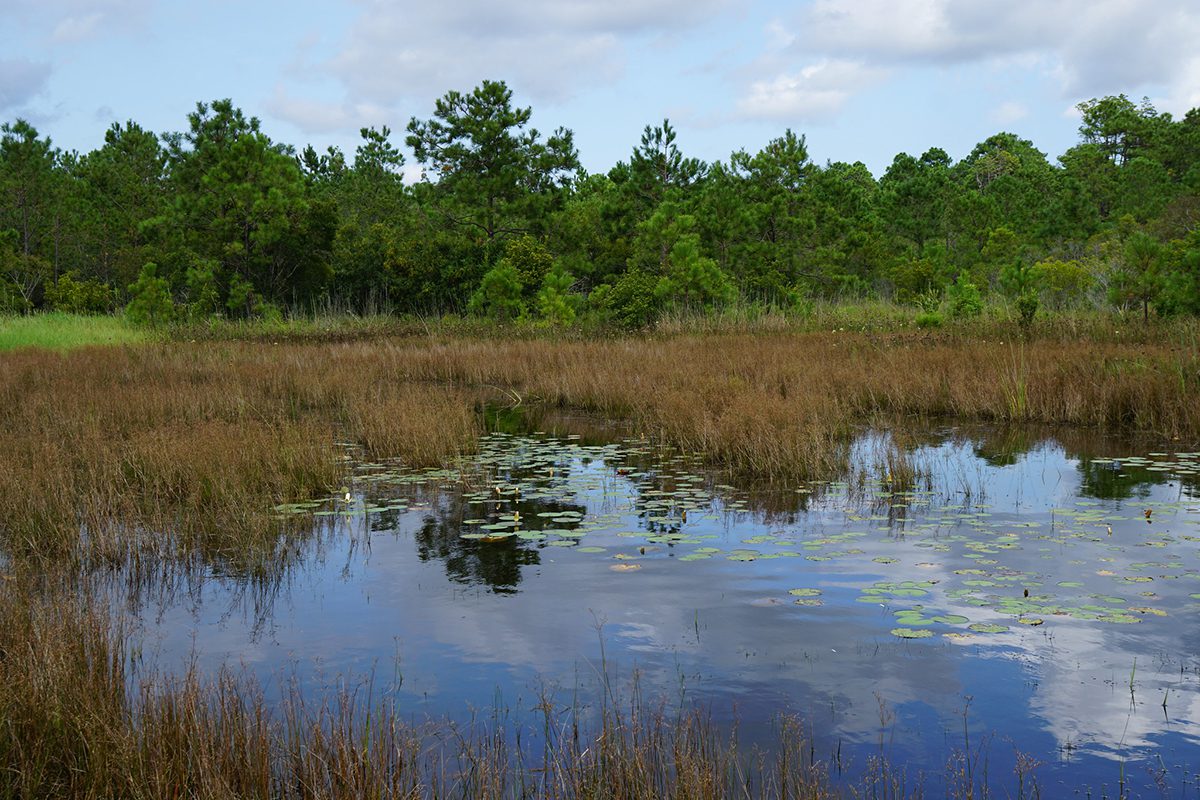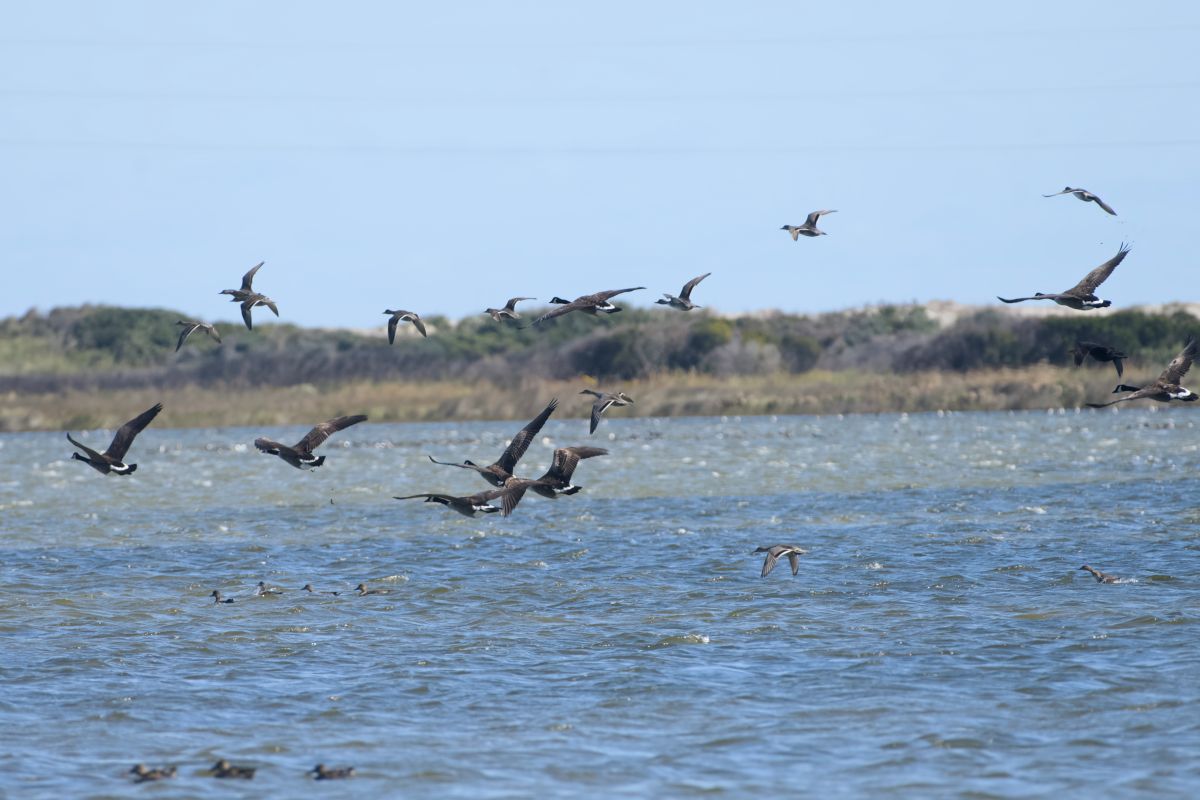
Second of two parts. Read part 1.
The final rule ending federal protections for isolated wetlands that the Environmental Protection Agency and Department of the Army issued last week is another setback in the more than 40-year battle to protect North Carolina’s water quality.
Supporter Spotlight
Issued Aug. 29, the amendment to the final “Revised Definition of ‘Waters of the United States’” rule published in the Federal Register in January reflects the Supreme Court’s May 25, 2023, Sackett v. EPA decision that only wetlands with a “continuous surface connection” to waterbodies are considered “waters of the United States.”
The two agencies enforce the Clean Water Act put in place in 1972 that prohibits the discharge of pollutants from a point source into “navigable waters,” or those defined as waters of the United States, or WOTUS.
The amended rule, coupled with the North Carolina Farm Act passed June 27 that aligns the state definition of wetlands to the federal definition, opens up 2.5 million acres of isolated wetlands to being developed, according to an estimate provided earlier this year by the state.
A Department of Environmental Quality representative told Coastal Review Friday that the agency was still “reviewing the final rule released by EPA this week and is unable to provide a specific estimate of wetlands impacted based on the rule change.”
With these two rule changes, North Carolina Coastal Federation Executive Director Todd Miller said to expect “a mess and a real threat to the health of our coastal estuaries that support the marine fisheries of North Carolina.
Supporter Spotlight
“We can also expect to see more closures of waters for swimming,” Miller said.
Southern Environmental Law Center Senior Attorney Derb Carter Jr. echoed Miller’s concern.
“The state estimates that up to 60% of the wetlands in the state will no longer be protected or regulated under the Clean Water Act,” Carter told Coastal Review. “I don’t think the public is quite aware of the scope of this and its potential impact on wetlands, on water quality and on the natural heritage of the state.”
Carter said the Sackett case that began in the late 2000s happened when the EPA told the Idaho couple, who had begun to backfill their property adjacent to a lake to prepare for construction, that they needed a permit. “They weren’t told they can’t do it. They were told they needed a permit. Instead, it became a challenge to whether Congress can regulate wetlands at all under the Clean Water Act,” he said.
The Sackett case would not be as big of a concern in North Carolina, Carter explained, “because the state program had been in place to backstop the federal program and ensure at the end of the day, that all the wetlands are protected.”
But the 2023 Farm Act changed that.
Gov. Roy Cooper vetoed the bill June 23, because of the provision “severely weakens protection for wetlands” which will lead to “more severe flooding for homes, roads and businesses and dirtier water for our people, particularly in eastern North Carolina,” he said in a statement at the time. The provision coupled “with the drastic weakening of federal rules caused by the U.S. Supreme Court’s recent decision in the Sackett case, leaves approximately 2.5 million acres, or about one half of our state’s wetlands, unprotected.”
The legislature overrode the veto.
Carter continued, “Literally in one sentence this General Assembly at the behest some special interest in the legislature summarily repealed all of that, so there is no backstop supplementary protection for wetlands that are no longer regulated under the federal Clean Water Act after the Sackett decision.”
Going forward, the Farm Act says the only wetlands that are protected by state law are those that are determined to be protected at the federal level, under the Clean Water Act, after the Sackett decision.

Early days of wetlands advocacy
Miller told Coastal Review that the nonprofit he founded became active in this type of conservation because wetland drainage in the Albemarle-Pamlico peninsula had led to a federally funded proposal in 1982 to strip mine 120,000 of peat lands to make methanol. The land would have been reclaimed as farmland.
“The commercial fishermen in Pamlico Sound witnessed the direct harm the drainage was doing to the estuary, and were crying out for help, having sent a petition from Hyde County to Raleigh with over 3,000 signatures about the harm the drainage was already doing, without this new project,” Miller explained. “We got involved in that project as one of the first things the Federation ever did, thus our bumper sticker: No Wetland, No Seafood.”
Carter, who had worked alongside Miller while representing the National Wildlife Federation to stop the wetlands project, said that these pocosins on the Albermarle-Pamlico peninsula were not considered wetlands and would be opened up to peat mining then converted to agriculture.
“Coastal Federation volunteers worked with residents out there to help them understand this was a big decision that could have a lot of impact on commercial fishing, fisheries, and recreational fishing — that’s a big part of the economy out there — but we’re literally talking about tens of thousands of acres of wetlands that were proposed to be converted into agriculture with drainage into the estuaries of Pamlico Sound,” Carter said, adding they represented the case.
Historian David Cecelski, the Coastal Federation’s first volunteer, was on the ground, spending just shy of a year living in Swan Quarter spreading the word in mostly fishing communities about the consequences of the strip-mining project that was going to cover parts of the Dare, Beaufort, Hyde, Washington and Tyrrell counties.
During that time, he said he was welcomed by the community and took an interest in its history.
“Even to understand how to build bridges amongst people like between the Coastal Federation and those African American communities, I always felt like you had to dig deeper. You had to know the story of those communities,” he said.
Miller said that the Alligator River and Pocosin Lakes national wildlife refuges protect more than 100,000 acres.
He continued that in the time since, the Coastal Federation has invested heavily in buying lands that should be wet, and restoring their hydrology, including the North River Wetlands Preserve where alone nearly 5,000 acres were restored, and has been directly involved in restoring around 20,000 acres of wetlands with its partners.

Federal, state laws over the decades
Miller said that since the early 1980s, both federal and state laws and rules have progressively gotten stronger and more consistent, with some back-and-forth, but nothing overly dramatic.
“Enforcement of those laws and rules has always been a challenge, and a shortcoming to the effectiveness of the standards that are written in laws and rules. The current rollback at the federal and state levels means that we are back to where we started before the peat mining proposal — large wet areas of coastal North Carolina are no longer protected,” he said.
The Coastal Federation advocates that wetlands are critical not only as habitat, but also to maintain water quality and the productivity and health of coastal estuaries.
“When you alter hydrology and drain runoff off, the land that would normally have infiltrated and soaked into the ground, you change water quality and make our coastal waters unsafe for shellfish harvest and swimming. That runoff, even when not mixed with human development or sewage, contains high levels of harmful bacteria, nutrients, and sediment,” he said.
With wetlands protections, the most important time related to state regulations was in the early 2000s, Carter said. Also noting that there’s an interplay between federal and state laws.
From shortly after the Clean Water Act was enacted until 2000, the Corps of Engineers issued permits and the state issued water quality certifications, both under the act.
Carter said that was not without controversy. In 1985, the Supreme Court in a lawsuit unanimously decided that the EPA and the Corps had properly determined that wetlands are regulated under the Clean Water Act. Then, in 2001, the Supreme Court ruled in a 5-4 decision against the Corps’ addition to the wetlands definition that any wetland used by migratory birds is regulated under the Clean Water Act.
“The court said just the use of migratory birds of otherwise isolated wetlands that aren’t connected to any other waters is not enough to regulate activities on those wetlands under the federal Clean Water Act,” Carter said.
This prompted a response by the Environmental Management Commission.
The late Dr. Pete Peterson at the University of North Carolina Institute of Marine Sciences based on Morehead City was serving as chair of the commission’s Water Quality Committee. He was concerned that nobody knew the scope of wetlands that may no longer be protected. The commission initiated an effort to continue state protection of those wetlands.
The commission reached out to the attorney general to see if the state law at the time clearly encompassed protecting wetlands. The attorney general issued a formal opinion stating that when the General Assembly enacted the State Water Quality law in 1974, the definition of waters of the state regulated under that law was broad and encompassed wetlands.
“This is noteworthy. I keep trying to emphasize this to people, the attorney general also pointed out that the state constitution that the people amended in 1972 — and it’s still in the state constitution — says explicitly that it is the policy of the state and the will of the people in amending the constitution to protect wetlands in the state. The state has an explicit constitutional provision enacted by the people saying it’s the policy of the state to protect our wetlands by name,” Carter said.
The commission then enacted state regulations and established a state permitting system for those wetlands that were not under federal protection. These were challenged by the North Carolina Home Builders Association, which filed a lawsuit in state court contending that state law does not allow the commission to regulate wetlands.
“We intervened in that case. I represented the Coastal Federation and other organizations intervening on the side of the state to help defend those regulations and the EMC’s authority,” Carter said. The state Court of Appeals unanimously upheld the state’s authority to regulate wetlands as waters of the state.
Another decision by the Supreme Court in 2006 set up what became a new rule to assess wetlands that had been the policy up until the Sackett decision earlier this year.
“That was the genesis of the state regulations,” he said. “Now you have two things that happened in 2023. You have a much more political Supreme Court that’s willing to write its own definition of wetlands and, in my view, ignore what Congress actually intended to do in the Clean Water Act when it ruled in the Sackett case.”
With the longstanding state law based on the state constitution, the initial enactment of the Clean Water Act in the early 1970s, the attorney general’s opinion that the commission had authority in 2001, and the North Carolina Court of Appeals decision in 2002, the state had full authority to regulate wetlands, Carter said.
The Farm Act of 2023 ignores the will of the people, “And instead, responded to special interests in removing any state wetland protection beyond what the federal government provides, and they did it in ignorance,” he said. “They have no idea how many wetlands are now going to be at risk for loss and they have no idea what the impact of that is going to be on the state’s wetlands, the state’s water quality, all those things that rely on wetlands from fishery resources to avoiding downstream flooding. It is completely irresponsible and ignores the will of the people.”







